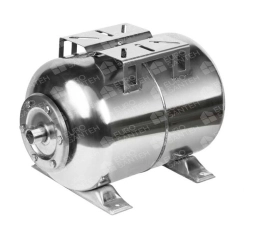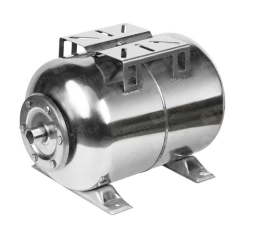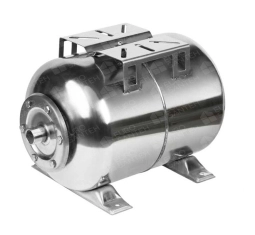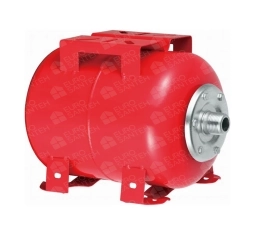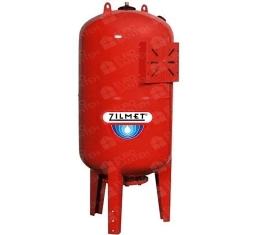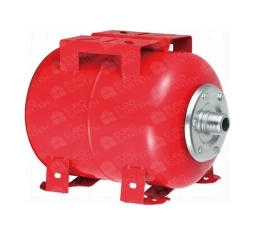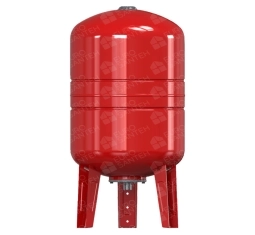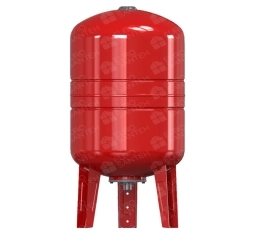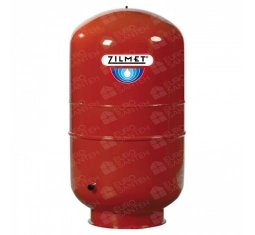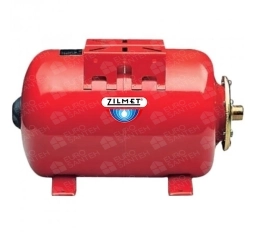Expansion tanks
Expansion tanks play a pivotal role in maintaining the integrity and performance of fluid systems, providing a critical component for managing pressure variations. In the following discourse, we will delve into the significance of expansion tanks, their diverse applications, and the factors to consider when selecting and installing these essential devices.
Understanding the Function of Expansion Tanks:
Fluids, especially water, undergo changes in volume due to temperature variations. When the temperature rises, fluids expand, and in a closed system, this expansion can lead to an increase in pressure. Without a mechanism to accommodate this expansion, it could result in system damage or failure. Expansion tanks act as a buffer, absorbing the excess fluid volume and preventing a hazardous rise in pressure.
Applications of Expansion Tanks: Versatility Across Industries:
Expansion tanks find applications in various industries, each with its unique set of requirements. Some prominent applications include:
Heating Systems: In hydronic heating systems, expansion tanks compensate for the thermal expansion of water as it is heated by the boiler. This is crucial to prevent pressure buildup and ensure the system's longevity.
Plumbing Systems: Municipal water supply systems and building plumbing use expansion tanks to absorb the expanded water volume during temperature changes. This helps prevent stress on pipes and fixtures.
HVAC Systems: Air conditioning and refrigeration systems often incorporate expansion tanks to manage changes in refrigerant volume caused by temperature fluctuations.
Solar Water Heating: Expansion tanks are integral to solar water heating systems, where the fluid in the collector loop expands and contracts with varying sunlight and temperature conditions.
Industrial Processes: Many industrial processes involve the use of fluids that experience temperature changes. Expansion tanks are employed to maintain stable pressure levels in such systems.
Key Components and Types of Expansion Tanks:
Expansion tanks come in various designs, but most consist of a chamber that accommodates the expanded fluid. The two main types are:
Diaphragm Expansion Tanks: These tanks feature a flexible diaphragm that separates the water chamber from a gas-filled compartment, often filled with nitrogen. As water expands, the diaphragm flexes, compressing the gas and preventing pressure spikes.
Bladder Expansion Tanks: Similar to diaphragm tanks, bladder tanks use a flexible bladder to separate the water and gas phases. The bladder, typically made of elastomeric materials, expands and contracts to accommodate fluid volume changes.
Factors to Consider When Selecting Expansion Tanks:
Choosing the right expansion tank involves a careful evaluation of several factors:
System Type: Identify the specific fluid system (heating, plumbing, HVAC) and its requirements to select a compatible expansion tank type.
Capacity: Determine the required capacity of the expansion tank by calculating the expected volume expansion of the fluid within the system.
Pressure Ratings: Ensure that the expansion tank's pressure rating aligns with the maximum pressure expected in the system. This prevents overpressurization and potential damage.
Material of Construction: The material of the tank must be compatible with the fluid it will contain. Common materials include stainless steel, carbon steel, and various plastics.
Installation Requirements: Consider the space available for installation and whether a vertical or horizontal tank configuration is more suitable for the system.
Maintenance Needs: Evaluate the maintenance requirements of the expansion tank. Some models may require periodic checks or replacements of internal components.
Installation and Maintenance Tips for Expansion Tanks:
Proper Sizing: Ensure that the expansion tank is appropriately sized for the system. An undersized tank may not effectively manage fluid expansion, while an oversized tank can lead to waterlogging issues.
Correct Placement: Install the expansion tank in a location with adequate support and follow the manufacturer's recommendations regarding orientation.
Pressure Adjustment: Adjust the pre-charge pressure of the expansion tank according to system specifications. This is crucial for optimal performance.
Regular Inspections: Periodically inspect the expansion tank for signs of wear, corrosion, or damage. Promptly address any issues to prevent system inefficiencies or failures.
Venting Procedures: Follow proper venting procedures during installation to eliminate air from the tank, ensuring it functions as intended.
Cost Considerations for Expansion Tanks:
When it comes to the cost of expansion tanks, several factors influence pricing:
Tank Type and Material: Diaphragm and bladder tanks may have different price points, and the material of construction (stainless steel, carbon steel, plastic) can affect costs.
Capacity: Larger capacity tanks generally come with higher costs due to the additional materials required for construction.
Brand and Manufacturer: Reputable brands and manufacturers may offer higher-quality expansion tanks, but these could come at a premium price.
Features and Specifications: Tanks with special features, such as corrosion-resistant coatings or advanced pressure control mechanisms, may have higher costs.
Conclusion: The Integral Role of Expansion Tanks in Fluid Systems:
In conclusion, expansion tanks are indispensable components in fluid systems, ensuring safe and efficient operation across various applications. Their ability to manage fluid expansion and prevent pressure fluctuations contributes to the longevity and reliability of heating, plumbing, and HVAC systems. By understanding the specific needs of the system, selecting the appropriate type of expansion tank, and adhering to proper installation and maintenance practices, users can optimize the performance of their fluid systems, enhancing safety and efficiency in the long run.
